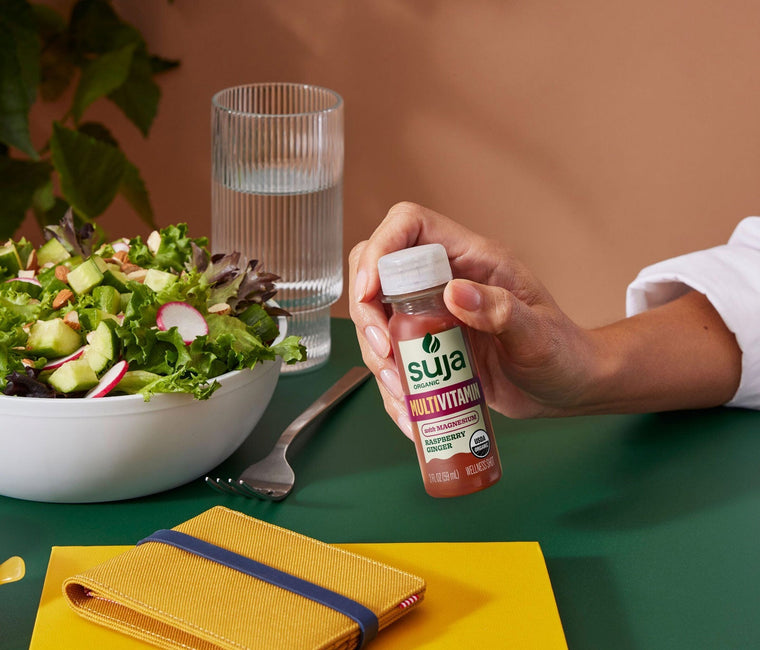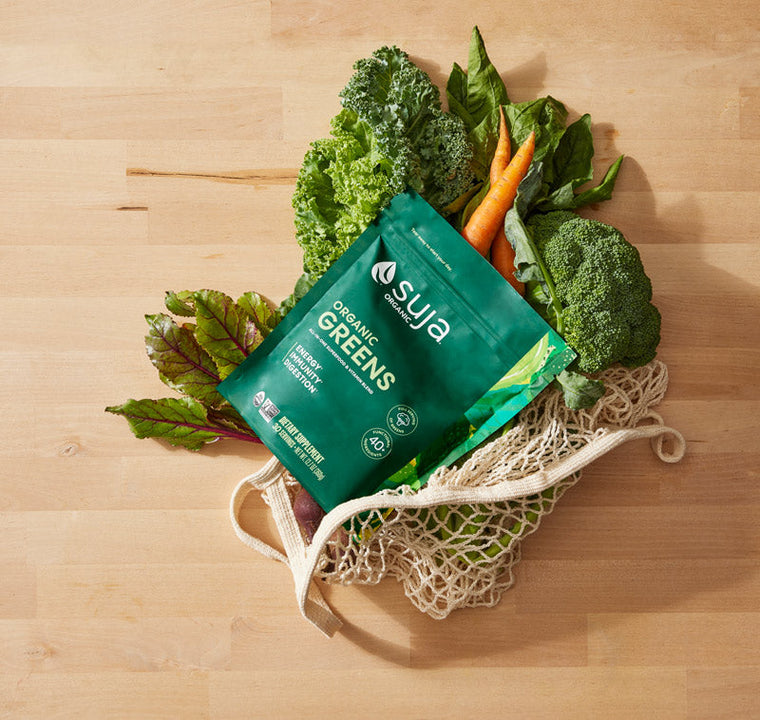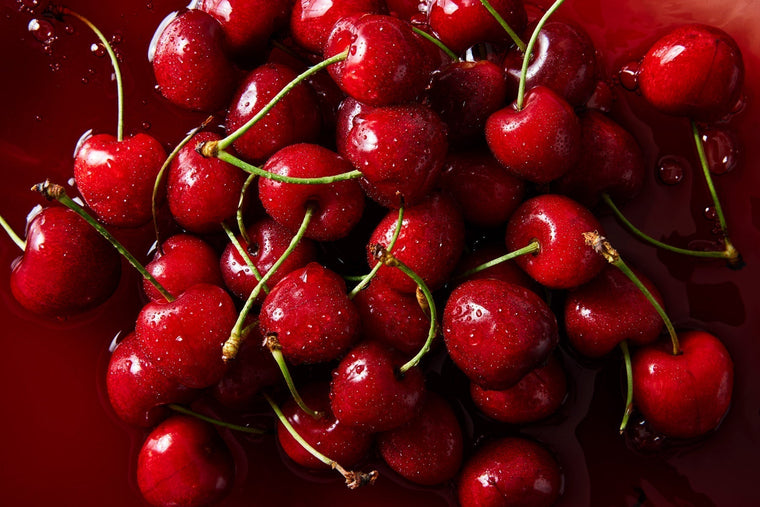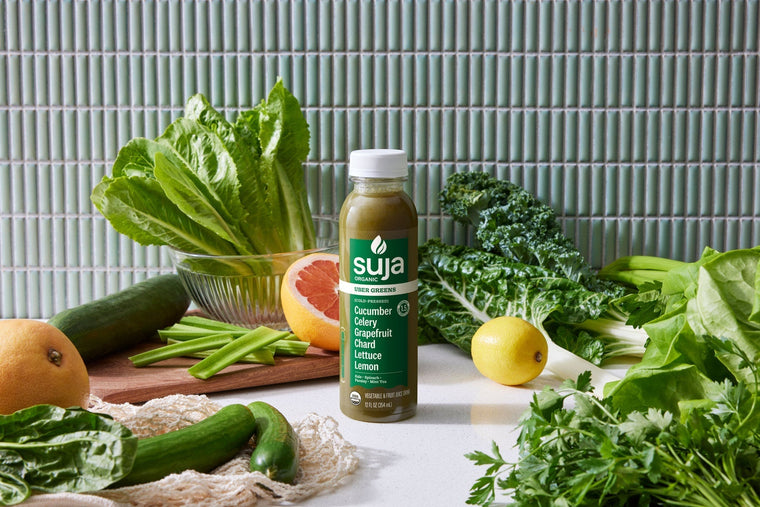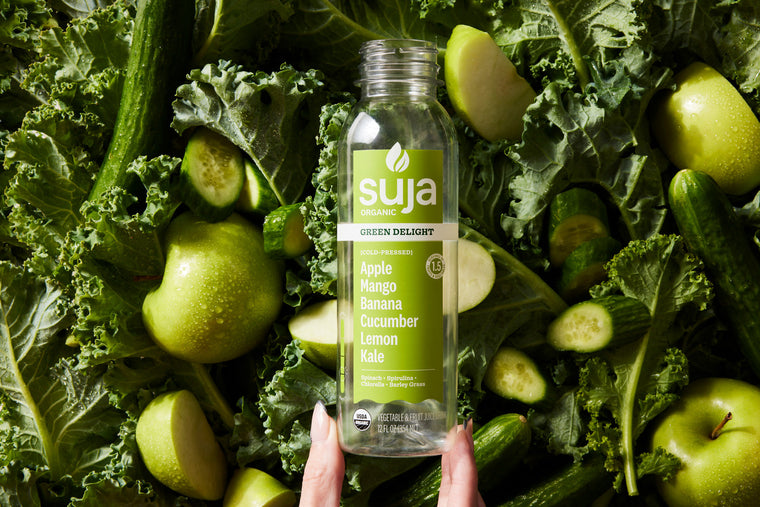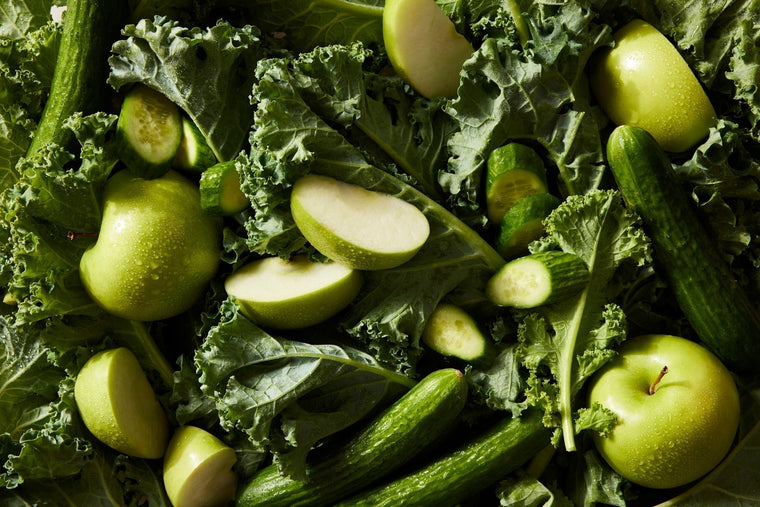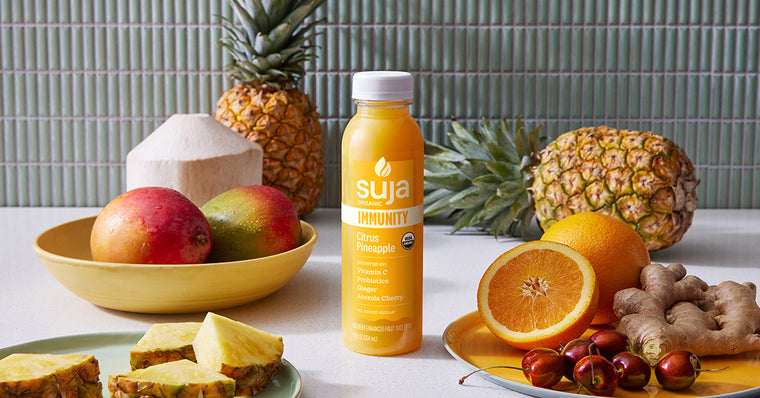When it comes to “good” fats, not all take up space on the podium—but some can actually be your body’s ally. While fats often get a bad rap, certain types, like those found in high-quality oils, can support everything from nutrient absorption to cell function.
The terms "healthy" and "unhealthy" fats aren't always black and white. Some fats support long-term health when used in balance, while others may be overconsumed or highly processed.
Yes, oils are fats. But here’s the thing: some deserve a spot in your kitchen (or your salad dressing), while others are better left on the shelf. According to the American Heart Association, the better choices are those rich in monounsaturated and polyunsaturated fats, not saturated or trans fats.1
Since consuming oil is likely already a part of your daily routine, we’re breaking down the difference between healthy and less-healthy oils. We’ll also explain why some oils labeled "unhealthy" aren’t inherently bad, but simply require moderation and context. Consider this your quick guide to making more informed, feel-good choices. Let’s dive in.
What Defines Healthy vs. Unhealthy Oils?
Healthy oils tend to be rich in monounsaturated or polyunsaturated fats and are minimally processed. Think avocado, olive, or flaxseed oil. Many people include these oils in their diets for their potential benefits to brain and heart health. Some, like fish oil, are high in essential omega-3 fatty acids.
On the flipside, oils often considered "unhealthy" may:
- Contain high levels of omega-6 fats without adequate omega-3 balance
- Be chemically refined or hydrogenated
- Appear frequently in processed foods or blends
That said, both omega-6 and omega-3 fatty acids are essential to your health. The problem lies in consuming too many omega-6s relative to omega-3s, which can promote inflammation over time.
But here’s something many people overlook: an oil’s smoke point—the temperature at which it starts to burn and break down—can also affect its quality. When an oil is heated beyond its smoke point, it can degrade and produce unwanted byproducts, which may impact flavor, stability, and overall integrity.
That’s why oils with higher smoke points, like avocado or refined olive oil, are often better suited for high-heat cooking, while oils with lower smoke points, like flaxseed or unrefined sesame oil, are best used in dressings or low-heat dishes.2
Understanding both the fat composition and the smoke point of your oils can help you make better decisions based on how you plan to use them.

Healthy Oils to Include Regularly
Here are some oils that offer health benefits when consumed in moderation and used appropriately:
Extra Virgin Olive Oil
Most likely one of the most accessible oils on our list is olive oil, more specifically, extra virgin, as it’s typically higher quality and unrefined. The ingredients are simple — typically just olives that have been crushed and filtered, which also contain high levels of antioxidants and vitamin E.3 There have been numerous studies released that link olive oil consumption to longevity.4
Smoke point: ~350–410°F (177–210°C). Varies based on quality and filtration; filtered EVOO tends to have a higher smoke point.
Fish Oil
We have to mention again that fish oil is truly one of the best due to its terrific source of omega-3 fatty acids, which can bolster your overall health, especially the heart and mental health.5
Smoke point: ~320°F (160°C). Not recommended for cooking due to low smoke point and susceptibility to oxidation.
Avocado Oil
This is another healthy oil we love to indulge in, especially due to its naturally higher smoke point—great for assembling stir fries and more! Avocado oil is made from ripe avocados and can support your overall health with antioxidants and vitamin E.6
Smoke point: ~500–520°F (260–271°C). Refined avocado oil is ideal for high-heat cooking methods like frying and searing.
Coconut Oil
Although this one can get mixed reviews, we’re adding it to the list. Coconut oil is a shelf-stable saturated fat and can tolerate heat from cooking without mutating and becoming carcinogenic. Coconut oil is rich in medium-chain fatty acids, which are easy for the body to break down and burn for energy, versus being stored as fat.7 It is also an abundant source of lauric acid, which has antiviral and antimicrobial properties.8
Smoke point: ~350°F (177°C). Unrefined coconut oil is best for medium-heat cooking.
Flaxseed Oil
This oil can provide an excellent source of the essential alpha linoleic fatty acid and omega-3s in your diet.9 It’s important to note that you don’t want to heat this oil – it is temperature sensitive and meant to be kept in the fridge in a dark bottle.
Smoke point: ~225°F (107°C). Not suitable for cooking; best used in cold applications like dressings.
Oils to Use with Caution
These oils are not inherently “bad” and can play a role in a balanced diet. However, they are often overused in processed foods and may contribute to an excessive intake of omega-6 fatty acids when not balanced with omega-3s.
Canola Oil
Canola oil comes from the rapeseed plant that has been bred to remove harmful compounds. While canola oil contains a relatively high amount of omega-6 fatty acids, it's not well-balanced with omega-3s in most people's diets. An excess of omega-6s, especially without sufficient omega-3s, may contribute to other health issues.10 11
Smoke point: ~400–475°F (204–246°C).
Corn Oil
Industrial corn oil is usually extracted from genetically modified corn and is highly refined. It is often hydrogenated—a process that introduces partially hydrogenated fats known to raise LDL (“bad”) cholesterol—and can contain small but meaningful levels of trans fats even when not explicitly labeled. While corn oil may help lower LDL compared to saturated fats, its high omega-6 content, processing methods, and potential for trans fat formation make it best used sparingly, not as a cooking staple.12
Smoke point: ~450°F (232°C).
Cottonseed Oil
Extracted from cotton seeds that contain gossypol, a naturally occurring compound removed through refining, but studies show trace amounts may remain. Typical industrial methods involve solvent extraction, and cotton farming is often pesticide-intensive, which could result in residual contaminants in the final oil. Use this oil more sparingly compared to less-processed alternatives.13
Smoke point: ~420°F (216°C).
Reading Labels: What Oils Are Really Inside
While it's easy to recognize oils like olive or avocado oil when they're sold in clear bottles, identifying unhealthy oils hidden in processed foods can be trickier. Fortunately, most oils must be listed in the ingredients section of the label, so you can scan for specific ones like corn or cottonseed, commonly used because they’re cheap, but often highly processed.
Be especially cautious when you see the word “blend” on a label. This usually means multiple oils have been combined, and often includes lower-quality or highly refined oils like canola or palm oil.
Always check the full ingredient list, not just the front of the packaging, and look for terms like “partially hydrogenated” or “vegetable oil,” which can indicate trans fats or poor-quality oil mixtures.
Choose The Best Oils for Your Wellness
We hope that with our guide, you’ll feel a bit more informed about purchasing oils the next time you’re in the store! With a bit of balance, you can choose oils that support long-term health, like extra virgin olive oil, flaxseed oil, and avocado oil.
Remember: omega-6 and omega-3 fats are both essential. The key is moderation, variety, and minimizing overly refined oils.
And if you have the extra time, don’t forget to take a peek at the food labels to see what you’re actually purchasing. Cheers!
*Disclaimer: This blog contains promotional content about our products. The information provided in this blog is for educational and informational purposes only and should not be construed as medical advice. While the nutritional information and health tips shared here are based on published studies and expert insights, they should not replace advice and treatment from a healthcare professional. Always consult a qualified healthcare provider with any questions you may have regarding a medical condition or health objectives.
Endnotes
- American Heart Association. (2021, November 1). Dietary Fats. Www.heart.org; American Heart Association. https://www.heart.org/en/healthy-living/healthy-eating/eat-smart/fats/dietary-fats.
- Bhat, S., Maganja, D., Huang, L., Wu, J. H. Y., & Marklund, M. (2022). Influence of Heating during Cooking on Trans Fatty Acid Content of Edible Oils: A Systematic Review and Meta-Analysis. Nutrients, 14(7), 1489. https://doi.org/10.3390/nu14071489
- Contributors, W. E. (2023, August 1). Are There Health Benefits to Their Extra Virgin Olive Oil? WebMD. https://www.webmd.com/diet/health-benefits-extra-virgin-olive-oil
- Godman, H. (2022, April 1). Harvard study: High olive oil consumption associated with longevity. Harvard Health. https://www.health.harvard.edu/staying-healthy/harvard-study-high-olive-oil-consumption-associated-with-longevity
- LeWine, H. (2019, July 24). Fish oil: friend or foe? - Harvard Health Blog. Harvard Health Blog. https://www.health.harvard.edu/blog/fish-oil-friend-or-foe-201307126467
- Clinic, C. (2024, December 19). Yes, Avocado Oil Is Good for You. Cleveland Clinic. https://health.clevelandclinic.org/is-avocado-oil-good-for-you
- Gao, Y., Liu, Y., Han, X., Zhou, F., Guo, J., Huang, W., Zhan, J., & You, Y. (2022). Coconut oil and medium-chain fatty acids attenuate high-fat diet-induced obesity in mice through increased thermogenesis by activating brown adipose tissue. Frontiers in Nutrition, 9. https://doi.org/10.3389/fnut.2022.896021
- Matsue, M., Mori, Y., Nagase, S., Sugiyama, Y., Hirano, R., Ogai, K., Ogura, K., Kurihara, S., & Okamoto, S. (2019). Measuring the Antimicrobial Activity of Lauric Acid against Various Bacteria in Human Gut Microbiota Using a New Method. Cell Transplantation, 28(12), 1528–1541. https://doi.org/10.1177/0963689719881366
- National Institutes of Health. (2023, February 15). Office of Dietary Supplements - Omega-3 Fatty Acids. Nih.gov. https://ods.od.nih.gov/factsheets/Omega3FattyAcids-HealthProfessional/
- Home | CODEXALIMENTARIUS FAO-WHO. (n.d.). Www.fao.org. https://www.fao.org/fao-who-codexalimentarius
- Ap, S. (2002, October 1). The Importance of the Ratio of omega-6/omega-3 Essential Fatty Acids. Biomedicine & Pharmacotherapy = Biomedecine & Pharmacotherapie. https://pubmed.ncbi.nlm.nih.gov/12442909/
- Song, J., Park, J., Jung, J., Lee, C., Gim, S. Y., Ka, H., Yi, B., Kim, M.-J., Kim, C., & Lee, J. (2015). Analysis of Trans Fat in Edible Oils with Cooking Process. Toxicological Research, 31(3), 307–312. https://doi.org/10.5487/tr.2015.31.3.307
- Megan Falk. (2023). mindbodygreen. Mindbodygreen.com. https://www.mindbodygreen.com/articles/cottonseed-oil?srsltid=AfmBOoq5BhQDeSxO5KNV49kaauDbmjVo8h1mPZVm8mU95nZLEAOuBILf


